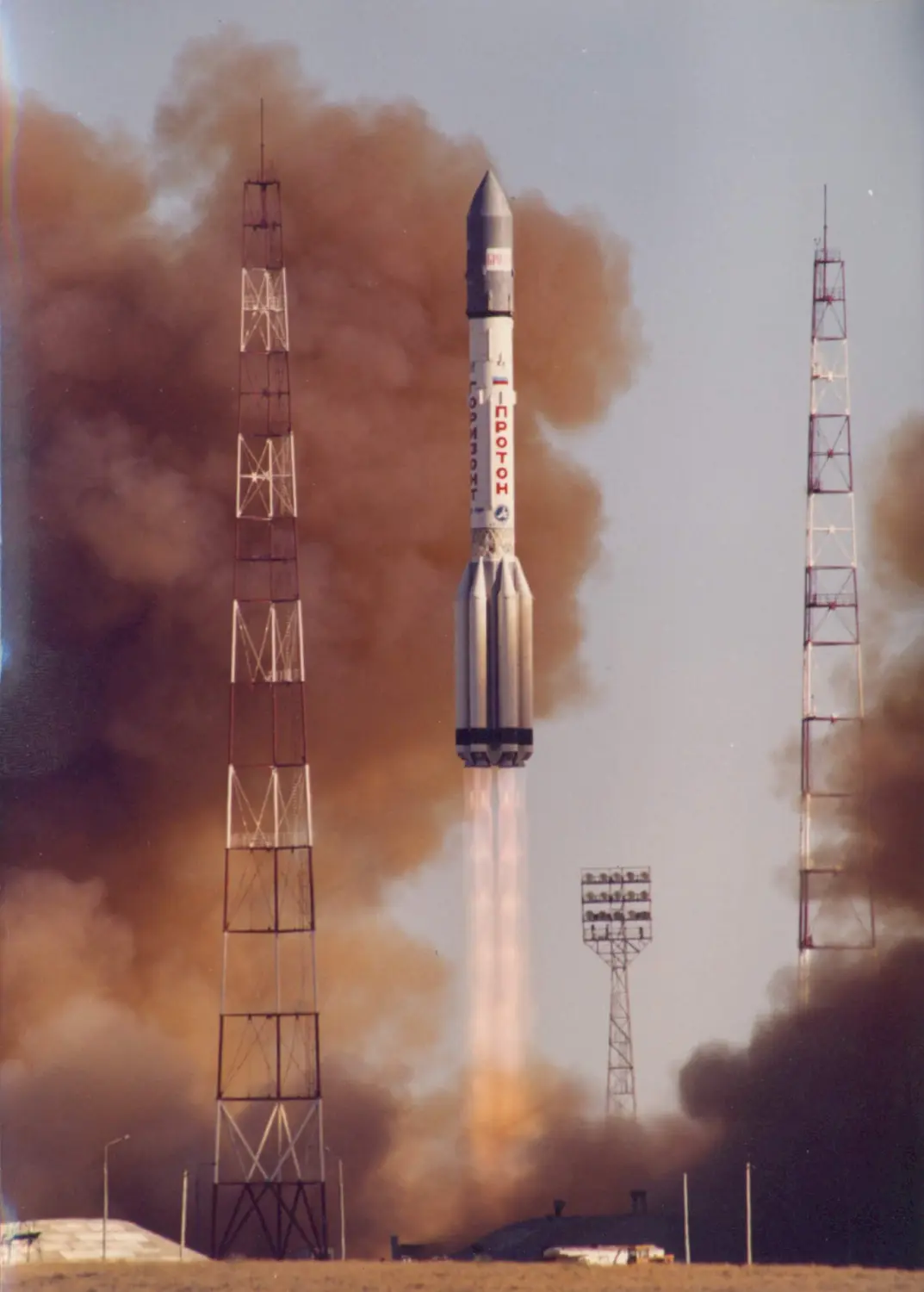Gorizont 33
Launch Success
Liftoff Time (GMT)
02:59:00
Tuesday June 6, 2000
Mission Details
Launch Notes
First successful flight of the Briz-M.
Gorizont 33
Gorizont were geostationary communications satellites (civilian and military) of the Soviet Union, developed in 1975. The first satellite was launched in December 1978, but never became operational. It was necessary to replace it quickly, because it was supposed to broadcast the Olympic Games in Moscow. Three new satellites are thus launched, and the system enters in service just before the opening of the Games. Then, the Soviet Union launches two to three Gorizont each year to maintain the telecommunications network operational. These were the satellites that provided the direct link between the Kremlin and the White House. On July 20, 1993, after the fall of the USSR, a Russian consortium named Informcosmos signed a contract with Rimsat, an offshore company in a tax haven, to lease three Gorizont satellites. Rimsat was created mainly to exploit orbital positions occupied by the Tonga Islands. Thus, in 1993, Gorizont 17 became Tongastar 1. Then, two new satellites are launched specifically for the needs of Rimsat and are named Rimsat 1 and 2. But Rimsat meets important financial difficulties. In September 1995, tired of not being paid, the Russians simply take the decision to move the satellites, breaking the contract with Rimsat. Subsequently, the two Rimsat were transferred to PASI and AsiaSat (one each) and finally both to LMI. From 1994, the Ekspress satellites begin to replace the constellation, and the Gorizont are no longer useful. The last one was launched in 2000. The Gorizont satellites have a mass of 2120 kg and dimensions 5.45 x 3.3 x 9.46m. They have an in-orbit lifetime of three to five years, and their solar panels can generate a power of 1280W. They are based on the KAUR-3 platform, and are equipped with six C-band, one Ku-band and one L-band transponders, all supplied by RNII KP. The engines are provided by OKB Fakel. The Gorizonts have a cooling system with heat pipes developed by the NPO PM.
Geostationary Earth Orbit
1 Payload
2,120 kilograms
Rocket


Manufacturer
KhrunichevRocket
Height: 54.54m
Payload to Orbit
LEO: 19,000 kg
GTO: 2,200 kg
Liftoff Thrust
9,548 Kilonewtons
Fairing
Diameter: 4.35m
Height: 13.2m
Stages
4
Launch Site
Stats
Proton-K
269th
Mission
4th
Mission of 2000
2000
31st
Orbital launch attempt